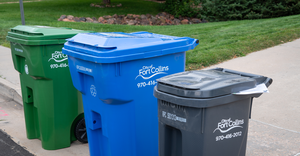Taking the Wheel: The Road to Combating Distracted Driving

Three injuries a year on average versus more than 2,800 fatalities and an estimated 400,000 injuries. In a cost benefit analysis, where would you see the ability to get the biggest return on investment in protecting human life?
According to the Consumer Product Safety Commission (CPSC) website, CPSC is charged with protecting the public from unreasonable risks of injury or death associated with the use of the thousands of types of consumer products under the agency's jurisdiction.
This past year, the National Waste & Recycling Association (NWRA) received a letter, as the secretariat to the Z245.3 Equipment Technology and Operations for Wastes and Recyclable Materials Waste Containers Safety Requirements, from CPSC. The letter asked that the language on 95/96-gallon roll-out carts be changed for 45 incidents since 2006 and where almost half, 20, of the incidents the consumer was using the cart improperly.
Under 15 USC § 2052(a)(5) Consumer Product, “the term ‘consumer product’ means any article, or component part thereof, produced or distributed (i) for sale to a consumer for use in or around a permanent or temporary household or residence, a school, in recreation, or otherwise, or (ii) for the personal use, consumption or enjoyment of a consumer in or around a permanent or temporary household or residence, a school, in recreation, or otherwise.”
I cannot think of a consumer product that has become more ubiquitous to daily life than a smart phone. CPSC asked the industry trade association to change actions for three injuries a year, a miniscule number when you think of how many times every cart in the U.S. is used each year. Why isn’t it doing something about mobile phones, which are the root of distracted driving?
That is why NWRA is actively meeting with members of Congress, has submitted a Freedom of Information Act request to CPSC for all material relating to mobile phones and the decision not to regulate them, and sent a letter to the White House Domestic Policy Council asking it to take the lead on addressing this regulatory donut.
For years, the mantra has been “educate consumers and they will do the right thing.” However, incremental gains only get you so far. As consumers and workers are dying from inherently addictive mobile phones—whether it is walking, scooting, cycling or driving—we need to have a new approach to protecting consumers and those affected by improper consumer use. CPSC can’t hide behind outdated interpretations of what a consumer product is. In that case, my buggy whip is calling.
About the Author
You May Also Like


